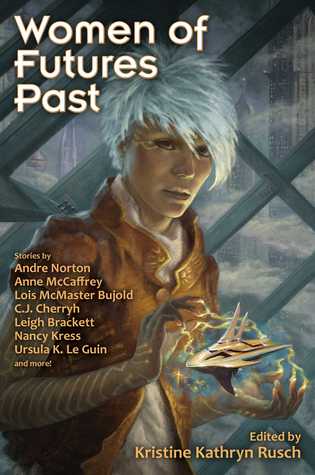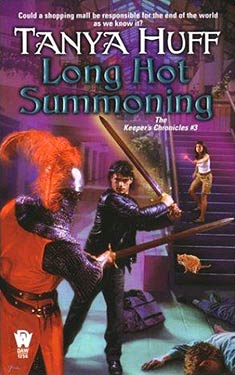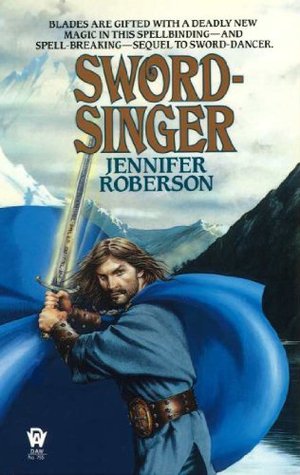A collection of science fiction short stories by very influential women writers. The oldest was written in 1933 and the newest 1989.
Publication year: 2016
Format: print
Page count: 267
Publisher: Baen

Lots of people are saying the women don’t write, and publish, science fiction. That’s simply not true. As Rusch shows us in her “Introduction: Invisible Women” women have been writing SF since the beginning of the genre attracting readers and winning awards. But readers and critics, both men and women, have many, many ways of marginalizing and outright forgetting women. They write in wrong subgenre, have wrong themes, the science is outdated etc. etc. ad nasaum. Well, Rusch and Baen are now bringing back some of the ignored women whom the younger generation of readers, and writers!, don’t know.
Much to my surprise this collection has only one writer I haven’t heard of before: Zenna Henderson. Actually, I’ve read only one story from these before: Bujold’s Aftermaths. So, I was delighted to read these stories and I dearly hope there will be more.
The stories are in a variety of styles and sub genres from horror to pulp fiction to time travel. I liked the introductions, too, because Rusch tells us the awards and honors these writers have won and the way they’ve influenced each other and the whole genre.
“The Indelible Kind” by Zenna Henderson (The Magazine of Fantasy & Science Fiction, December 1968): Miss Murcher is a teacher in a small school and Vincent comes to her school. Vincent is eight but he can’t read much. Otherwise, he’s very bright boy and perhaps something more.
This is one of the quieter stories, with the Other as its theme.
“The Smallest Dragonboy” by Anne McCaffrey (Science Fiction Tales, 1973): Keevan is barely twelve and the smallest of the boys who want to be dragonriders. But the more he’s bullied and teased by the oldest boy, the more he’s determined to impress a dragon hatchling.
It’s been decades since I read Pern books but this story brought the setting right back and made me want to read some of the Pern books I haven’t read.
“Out of All Them Bright Stars” by Nancy Kress (The Magazine of Fantasy & Science Fiction, March, 1985): Sally works in a diner. The US government has contact with aliens but Sally and her friends have only seen them on TV. Until one walks into the diner.
“Angel” by Pat Cadigan (Isaac Asimov’s Science Fiction Magazine, June 1987): Angel is the main character’s (MC) friend. He communicates with the MC without words and do all sorts of little tricks. Then Angel sees a strange woman he clearly fears.
“Cassandra” by C.J. Cherryh (The Magazine of Fantasy & Science Fiction, October 1978): One of my favorite authors but I don’t think I’ve read her short fiction before.
The people call her Crazy Alis because to her only she is a solid person. Other people are grey ghosts walking around in a town which is in flames and crumbling down. Medicines take away her nightmares and allow her to sleep, but they don’t take away the things she sees when she’s awake.
“Shambleau” by C.L. Moore (Weird Tales, November, 1933): The oldest story in the collection mixes pulp fiction and horror.
Northwest Smith is an intergalactic smuggler and not the most gallant of men. But when he sees a girl running from a murderous crowd, he rescues her and even gives her a place to sleep. However, the girl isn’t human and then his real troubles begin.
“The Last Days of Shandakor” by Leigh Brackett (Startling Stories, April 1952): Another pulp story but this time with the subject of lost city. Set in Mars in Brackett’s Eric John Stark universe where Mars, Venus, and some of the other planets are habitable and have their own humanlike people.
John Ross in a man from Earth but he lives on Mars. He studies the local peoples and places. Then he sees a man who doesn’t look like anyone else John has ever seen. He calls himself Corin and at first he refuses to take John to his city, which is apparently dying. But reluctantly he agrees and the two set into a desert on the road to Shandakor.
“All Cats Are Gray” by Andre Norton (Fantastic Universe, August/September 1953): Cliff Moran is a down-of-his-luck captain. Steena of the Spaceways, and her gray cat Bat, are a legend among the spacefarers. When she says that the legendary haunted luxury liner Empress of Mars is drifting close by, Cliff believes her and they head out to capture it.
“Aftermaths” by Lois McMaster Bujold (Far Frontiers: The Paperback Magazine of Science Fiction and Speculative Fact, Volume V, Spring 1986): Bujold is one of my favorite authors. I’ve read this little gem several times.
Falco Ferrell is a pilot and new to the Personnel Retrieval and Identification branch of the Escobaran space military. He and his new partner, MedTech Tersa Boni, have been assigned the rubble of space battle. Their task is to retrieve the bodies, identify them, and send them home. But soon, Falco starts to suspect that Tersa has been in the service for too long.
“The Last Flight of Doctor Ain” by James Tiptree, Jr. (Galaxy, March 1969): Doctor Ain travels around the world and everywhere he goes, people fall sick.
“Sur” by Ursula K. Le Guin (The New Yorker, February 1, 1982): This story is alternate history without any SF elements.
Since she was a little girl, the main character has been fascinated by the reports and books by men who have gone to the South Pole. But the dream of going there herself has seen unattainable, until she gathers a group of determined women who share her dream.
“Fire Watch” by Connie Willis (Asimov’s Science Fiction Magazine, February 15, 1982): A story about the time traveling historians! I can’t believe I haven’t heard of this one.
Time traveling to the past is hard. But it’s even harder when you’ve been preparing to walk with Saint Paul himself – and are sent instead to St. Paul’s in the middle of air raids. The main character tries to prepare as well as possible, but it might not be enough.
Not all of these stories worked for me but most of them are strong and some of them are real gems.
Rusch has a related website: http://www.womeninsciencefiction.com/
By the way, some of Leigh Brackett’s work is available on Audible.com if you like audio books.











